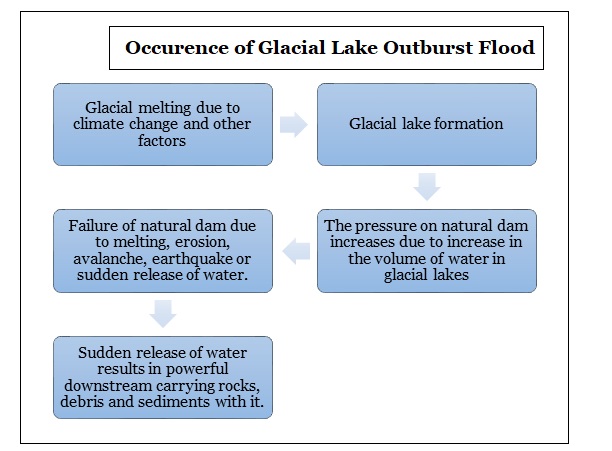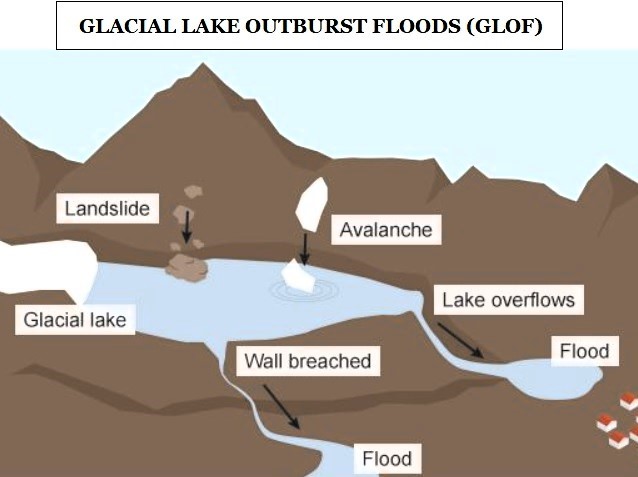7667766266
enquiry@shankarias.in
Recently Birendra glacial lake in Nepal collapsed due to avalanche.


ISRO said that 130 of the 676 lakes are situated in India, in the Indus (65), Ganga (7), and Brahmaputra (58) river basins have expanded as glaciers are retreating at an ever faster rate due to global warming.
|
Instances of GLOFs in Himalayas |
Location |
|
Uttarkhand flash flood (2013), South Lhonak lake GLOF (2023) |
India |
|
Lugge Tso GLOF (2015) |
Tibet, China |
|
Birendra Lake GLOF (2024), Imja Lake GLOF (2016), |
Nepal |
Satellite remote sensing technology by ISRO proves to be an excellent tool for monitoring due its wide coverage and revisit capability
|
Steps taken by India to prevent GLOFs |
|